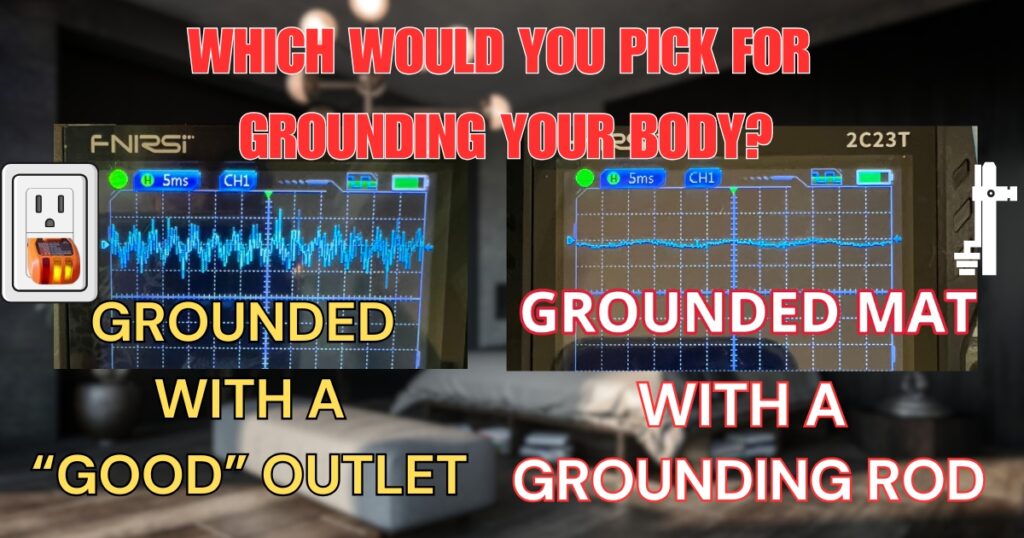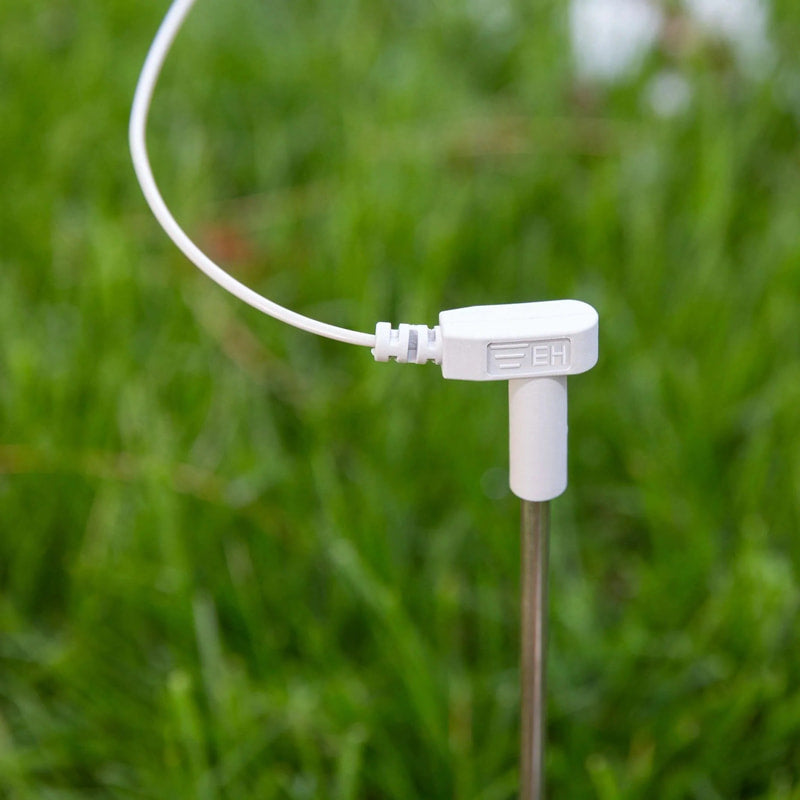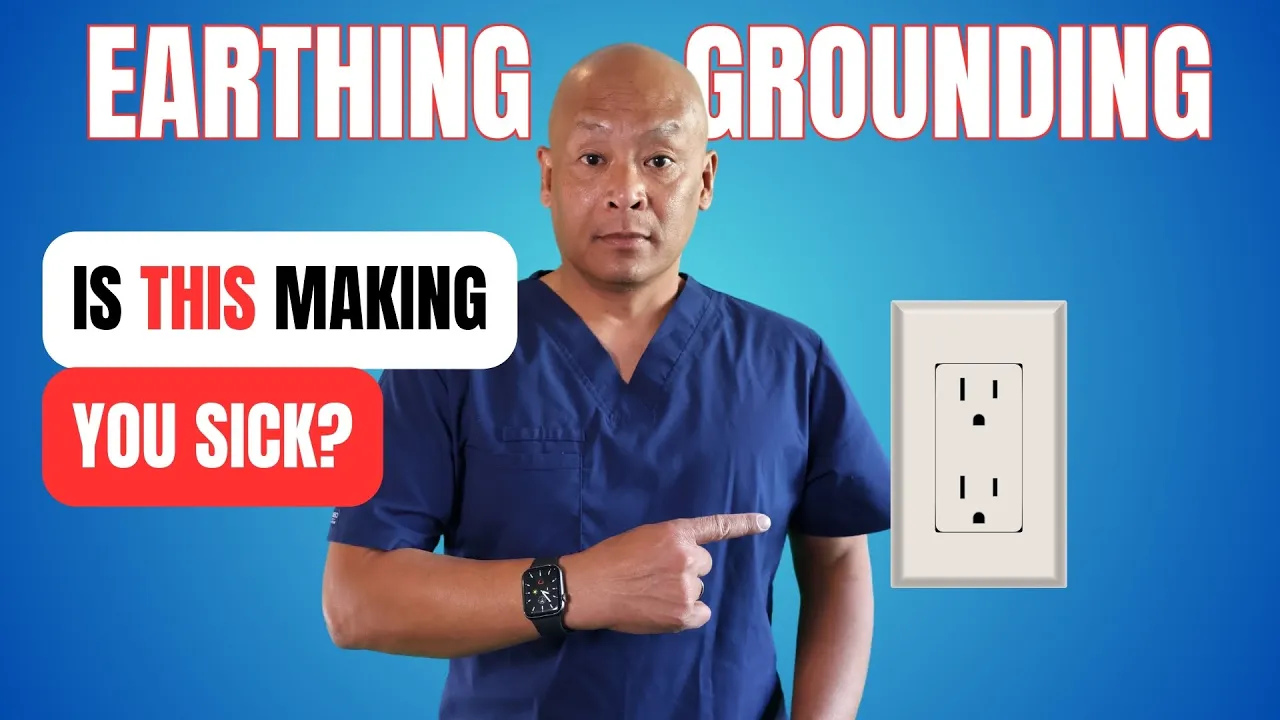Over the past five years, as one of the administrators of the Earthing & Grounding HEALS group, I’ve had the privilege of exploring the fascinating intersection of science, health, and the simple act of connecting to the Earth. Grounding, or earthing, has gained attention for its potential to improve health, but not all grounding methods are created equal. Let me share my journey and observations regarding grounding practices, the risks of dirty/stray electricity, and how to ground effectively and safely.
The Problem with Outlet-Based Grounding
In the forum, I’ve encountered numerous individuals experiencing symptoms like fatigue, headaches, insomnia, and even heart palpitations while using grounding products. These symptoms are often dismissed as “detox” or “herxing” reactions. However, my experience and research suggest a different cause: dirty or stray electricity.
Dirty electricity refers to high-frequency harmonics and stray currents that can infiltrate grounding devices connected to improperly wired outlets. When a grounding product like a mat or sheet is plugged into an outlet, the assumption is that it connects to the Earth safely. However, less than 50% of homes are wired correctly, according to Roy Cooke, a former master electrician and group moderator. Stray electrical currents in the outlet’s common ground can flow into grounding devices, causing adverse health effects instead of the intended benefits.

Why Outdoor Grounding is Superior
I’ve tested the differences between outlet-based and outdoor grounding using an oscilloscope. When connected to an outlet, the grounding cable revealed significant electrical noise—dirty electricity in the form of high-frequency harmonics. In contrast, when connected to a grounding rod placed directly in the Earth, the oscilloscope flatlined, indicating no interference.
The grounding rod bypasses the common ground shared by household appliances and wiring, eliminating the risk of stray currents. This method is far safer and more effective, especially for those experiencing symptoms linked to electromagnetic fields (EMFs).

The Science Behind Grounding and EMFs
Our bodies act as capacitors, meaning we generate and conduct electricity. Extremely low-frequency EMFs, such as the 50/60 Hz currents from household wiring, can penetrate deep into our tissues. Research, such as Dr. Paul’s 2013 review published in the Journal of Cellular and Molecular Medicine, demonstrates that these EMFs can activate voltage-gated calcium channels in our cells. While this can sometimes be beneficial, it can also lead to adverse effects like muscle aches, headaches, fatigue, and heart palpitations.
When grounding products are improperly grounded, they can inadvertently raise the alternating current in your body instead of reducing it. This is why some people may feel worse when using outlet-based grounding devices. The solution is simple but crucial: use an outdoor grounding rod to connect directly to the Earth, bypassing the electrical system in your home.
How to Transition to Outdoor Grounding
If you’ve been feeling sick while using an outlet to ground, stop using it immediately. Remove the grounding mat or sheet from your bed and get a grounding rod. Run the wire from the rod into your home, ensuring a direct connection to the Earth without relying on your home’s electrical system. The grounding rod wire can be passed under a window or through a hole drilled in the wall. To maintain weatherproofing, seal the hole with caulking and paint.
Grounding directly with a rod significantly reduces stray electricity, leading to a purer and safer grounding experience. While this setup may require more effort initially, the health benefits are well worth it.
The Detox Myth and EMF Toxicity
One of the most debated topics in the Facebook Group is the concept of grounding detox. Some individuals report symptoms when they begin grounding, such as fatigue, headaches, muscle/joint pain, flu-like symptoms, skin issues, digestive upset, inflammation, dizziness, irritability, brain fog, anxiety/restlessness, sleep issues, heart palpitations, sweating, and hot/cold flashes. To understand this phenomenon, I conducted a poll in the forum, gathering 220 responses in less than 24 hours. The results were eye-opening:
• 1% (n=3) experienced detox symptoms with barefoot earthing.
• 6% (n=11) had detox symptoms using a grounding rod.
• 40% (n=89) reported detox symptoms using the outlet.
• 53% (n=117) reported no detox symptoms.

The majority of individuals reporting detox symptoms were using the outlet for grounding. This suggests that a large percentage of people may not be experiencing a detox reaction but rather a response to mild EMF toxicity. Stray currents and dirty electricity from improperly wired outlets exacerbate EMF exposure, leading to discomfort.
Interestingly, individuals grounding barefoot on natural ground or using a properly installed grounding rod rarely reported detox symptoms. This reinforces the idea that the so-called detox reactions are likely caused by EMF exposure rather than the grounding process itself.
What Does This Mean for You?
If you’ve experienced symptoms while grounding with an outlet, it’s essential to evaluate your setup. Are you grounding through an outlet? If so, there’s a likelihood that stray currents or dirty electricity are affecting your experience. Switching to an outdoor grounding rod can provide a safer alternative and help alleviate these symptoms.

For those who have adapted to outlet grounding despite mild EMF toxicity, the benefits of grounding may outweigh the drawbacks. However, for individuals who continue to feel unwell, the risks associated with dirty electricity might be too significant to ignore.

My Personal Practice
In my home, I ground using a rod placed directly in the Earth. I connect my grounding cable to a mattress cover that sits beneath a 100% cotton sheet. With this setup, my oscilloscope consistently flatlines, indicating no stray currents or dirty electricity. I also educate my family about the importance of safe grounding practices, ensuring they reap the health benefits without unnecessary risks.
As someone who has monitored the Earthing & Grounding HEALS group for over five years, I’ve seen the transformative power of proper grounding. From reducing inflammation and improving sleep to alleviating chronic pain, grounding can be life-changing when done correctly.
Conclusion
Grounding is a simple, natural way to connect with the Earth and improve your health, but the method you choose matters. Outlet-based grounding products are convenient but often come with hidden risks like dirty electricity, stray currents, and EMF exposure. If you’re experiencing symptoms while grounding, consider transitioning to an outdoor grounding rod. This small change can make a significant difference in your overall well-being.
As we continue to learn about the effects of EMFs on the body, one thing is clear: grounding with an outdoor rod is the safest and most effective method. Whether you’re new to grounding or a seasoned practitioner, I encourage you to prioritize your health by grounding safely and mindfully.
Thank you for joining me on this journey. If you’ve found this information helpful, please share it with others and join the Earthing & Grounding HEALS Facebook Group for more insights and support. Happy earthing and grounding—and most importantly, be safe.
- I have used Earthing products for over 5 years and love them. I recommend the Earthing mattress cover under a 100% cotton sheet: https://tinyurl.com/5fa5b9ut
- Earthing grounding rod with 40’ cable: https://bit.ly/3Zl0gOX


Leave a Reply